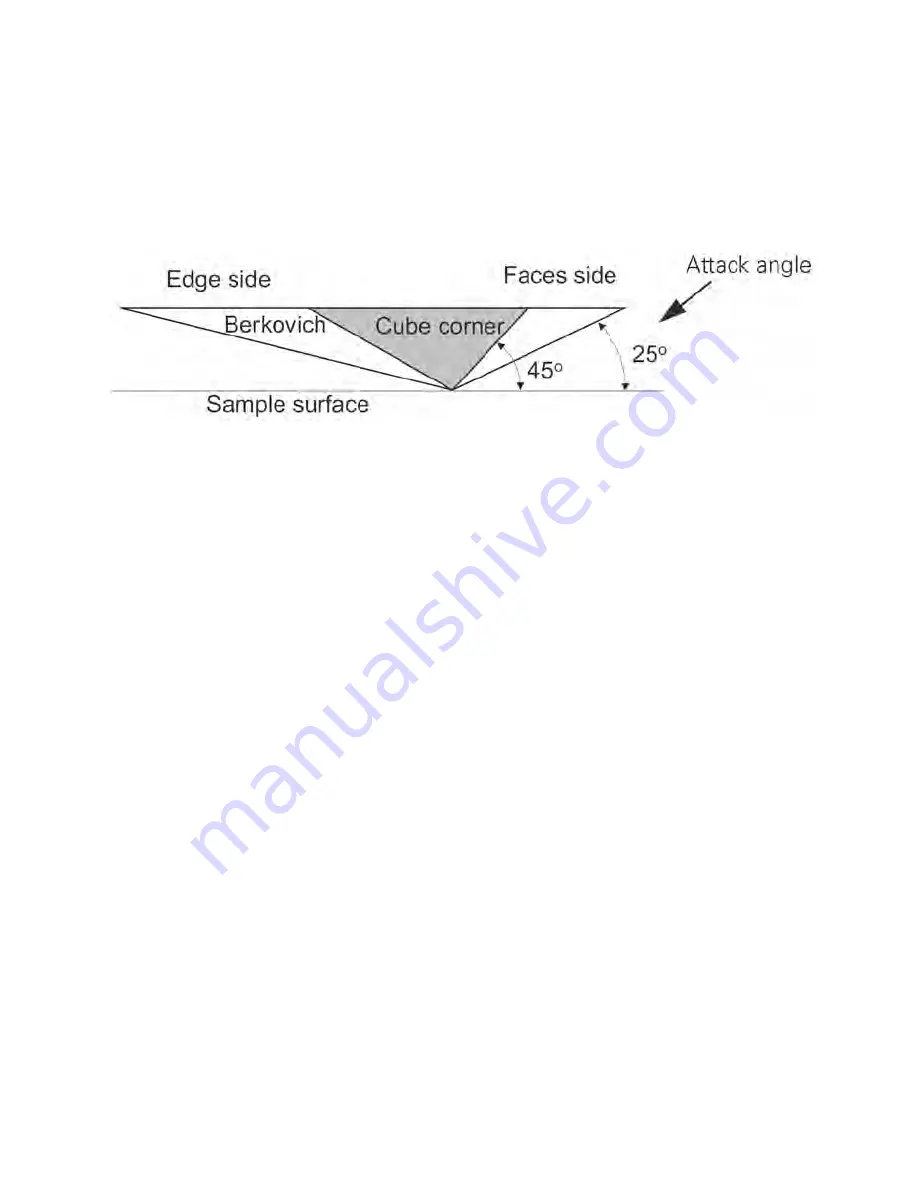
Scratch Testing E
Agilent Nano Indenter G200 User’s Guide
E-13
The fracture is usually related to the severity of the contact, mostly
related to the attack angle of the indenter, which is the angle between the
indenter face and the sample surface, as shown in
Figure E-9
Attack angle comparison between Berkovich vs cube corner
indenter
An indenter tip is usually blunted at its extremity, so under light loads
the contact may not create any fracture process, while under higher
loads, fracture will occur. For instance, some materials may never crack
if scratched with a Berkovich, under any loads, but would crack very
easily using a cube corner indenter, which has a higher attack angle.
Influence of Indenter Geometry
The indenter geometry used during a scratch has a great influence on the
surface behavior. Therefore, a description of the indenter geometry
should be included with the test results.
Various indenter shapes may be used for scratch testing, and each of
them has advantages and drawbacks. The following list is not
exhaustive: conical indenters with spherical tip, pyramids, spheres,
Berkovich, and cube corner.
Indenter geometry has a strong effect on elastic-plastic deformation
morphology.
on page E-14 illustrates the effect of the
orientation of a Berkovich indenter on the residual scratch morphology
(for scratches performed under the same normal load and at the same
velocity). The pile-up formation is much less evident when the edge of
the Berkovich indenter is oriented in the scratch direction. It is
interesting to note that in this example, the indenter penetration depth
did not strongly depend on its orientation.
















































